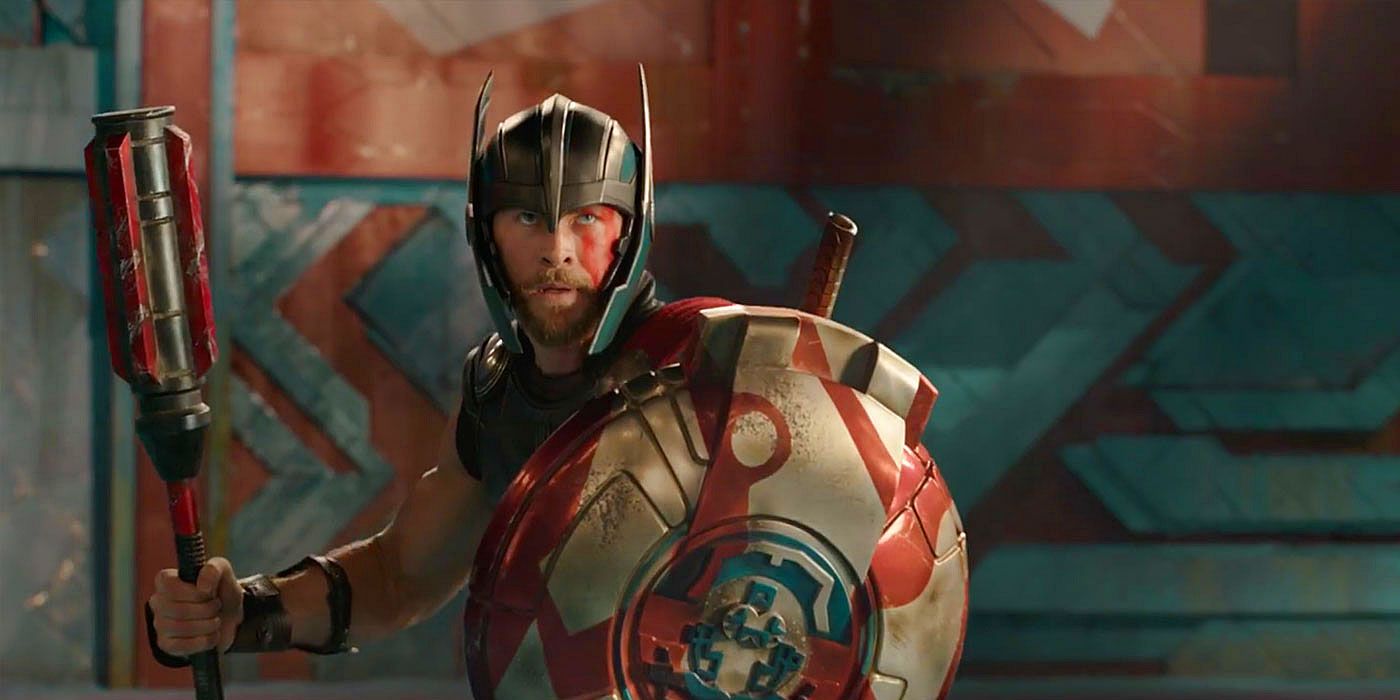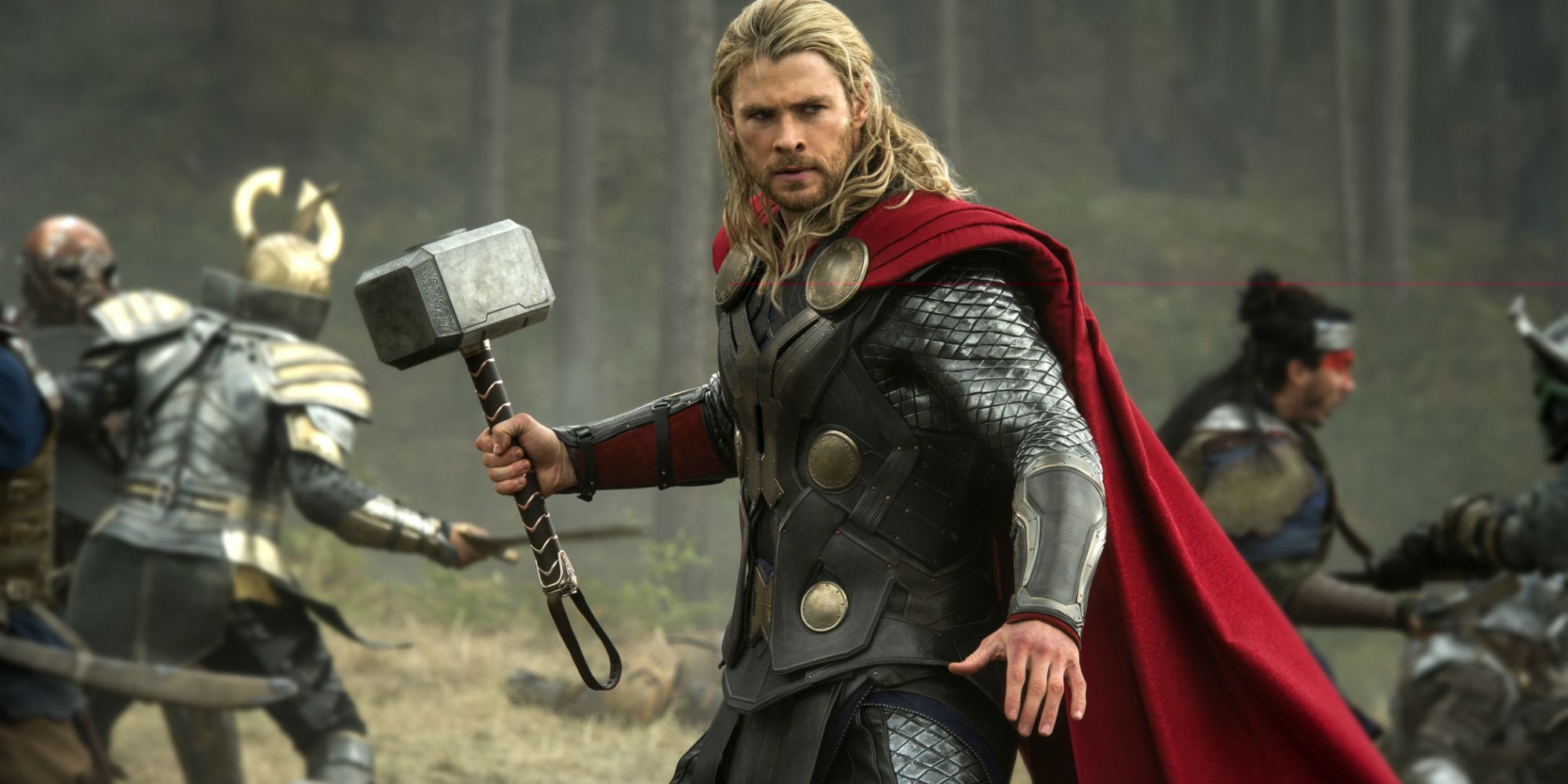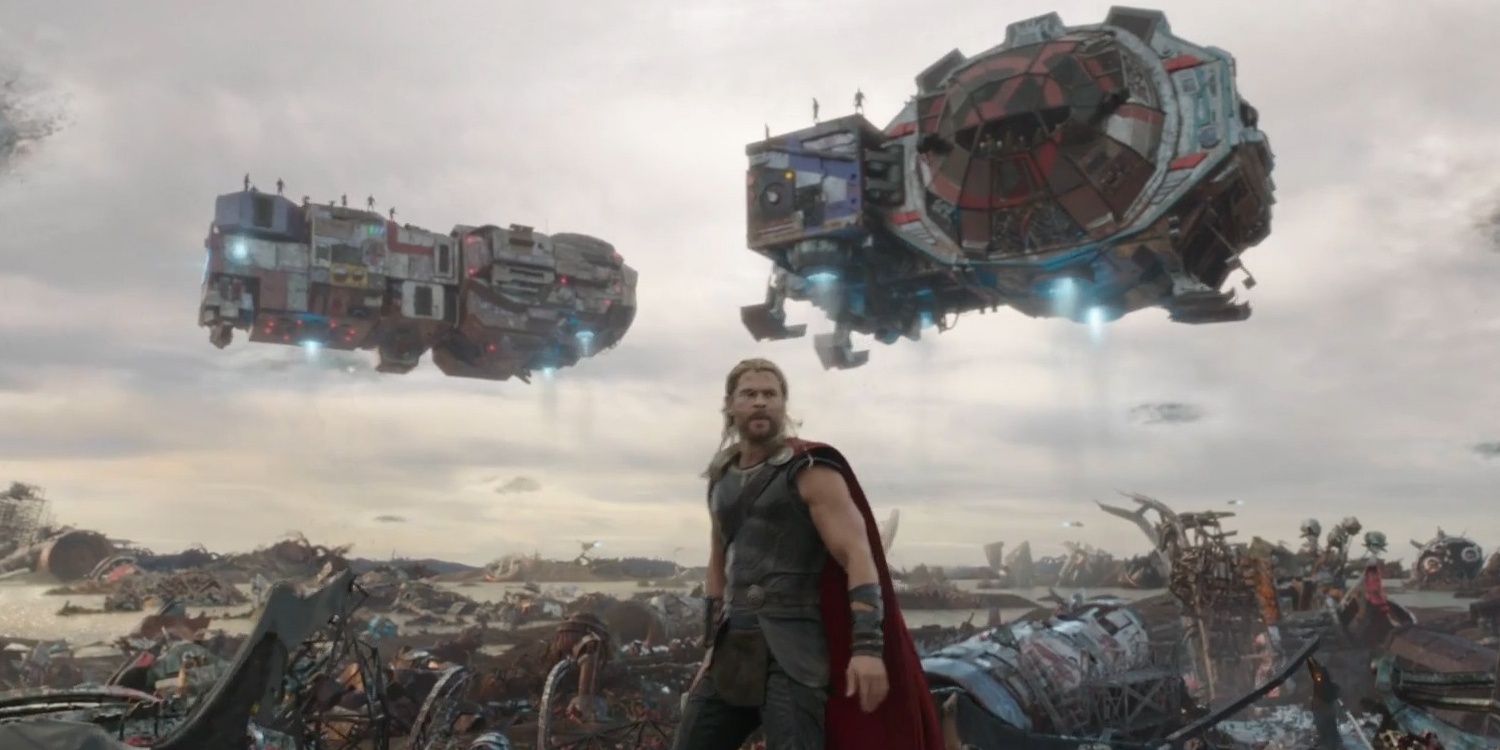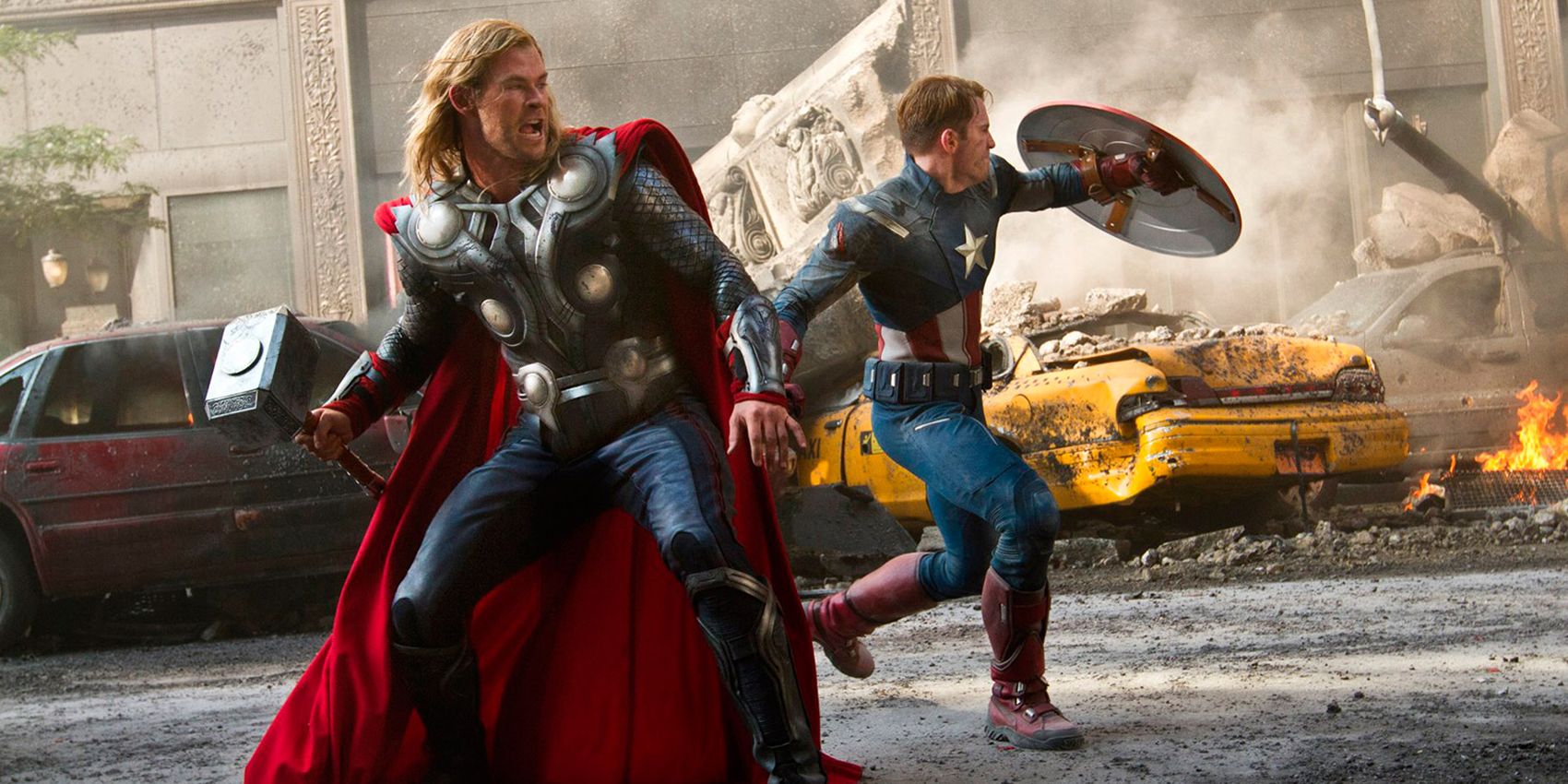Looking at the first trailer released for Taika Waititi's "Thor: Ragnarok," it seems Marvel Studios have finally embraced the go big or go home mentality fans have long hoped to see when it comes to the Asgardian adventures of our hero and his larger than life adversaries. The trailer provided our first glimpse of Hela kicking ass, and by that we mean breaking Mjolnir and banishing Thor so she can lay siege to Asgard, free of star Chris Hemsworth's handsome meddling. Though this is his first mainstream flick, Waititi's clearly not holding back, and the reception to the trailer has been enormous, breaking the Disney record and becoming the studio's most-watched trailer within a 24 hour period, over which it accumulated over 136 million views.
RELATED: Why Jeff Goldblum’s Grandmaster Isn’t Blue in Thor: Ragnarok
The fact is, "Ragnarok" appears to be as gigantic as it can get in terms of cinematographic magnitude, painting bombastic pictures of gods and monsters like the comics have since Stan Lee, Larry Lieber and Jack Kirby presented Thor's Marvel Comics debut in 1962. Waititi's film promises a Thor who is a world-trotting god, exploring the cosmic side of the MCU when his upcoming exile pits him against the Hulk in a gladiator arena light years from home. With all this awesomeness finally coming at audiences, it begs the question of why it took Marvel Studios so long to present a Thor adventure with such a grand scope?
Smaller Scale Often Equal Tighter Stories
Perhaps the most likely reason the "Thor" franchise was initially been kept small in scale was in order to build tighter stories in a universe not yet fully connected to the Nine Realms. Apart from a more controlled budget, this would have allowed more focused character development. When Kenneth Branagh's "Thor" hit in 2011, the Marvel Cinematic Universe's films were non-expansive, sticking mainly to threats the heroes faced on Earth. This move gave audiences a clear understanding of the heroes and who they were under the costume; the reduced scope actually gave fans more room to connect emotionally with the franchise's core characters.
Despite its semi-cosmic stage, director Alan Taylor's "Thor: The Dark World" did the same, dealing mainly with family rumblings, Thor's love for Earth and its people, and saving them from foreign threats. For the most part, the "Thor" sequel didn't traverse the cosmos or dive into team-ups against aliens and monsters, apart from a few Frost Giants and some Dark Elves, adopting a 'less is more' approach. Imagine shifting Thor from being stranded on Earth and fighting the Destroyer in a small town to quests navigating every nook and cranny the Bifrost Bridge allows. This would mean a bigger scope with more characters, more action, and less time to develop the franchise's main figures -- and let's face it, as it stands, we'vee yet to see Thor's close inner-circle such as Sif and the Warriors Three be properly developed. In the MCU, even though it took place across the stage of World War II, "Captain America: The First Avenger" felt confined to a smaller bubble, one which allowed us a near-perfect understanding of his character. By similarly limiting the scope of the first Thor films, Branagh and Taylor were able to effectively illustrate how Thor learnt humility and humanity, while grooming Loki's development made him perfect for "The Avengers" first villain.
Needed The Right Tools To Deliver A Visual Spectacle
In the comics, "Thor" tales are often stories of grandeur. When the first movie was made, few films could match the kind of C.G.I. and S.F.X. requirements needed to bring Thor's biggest stories to life and fully offer exploration into the Nine Realms. In fact, the only franchises we'd compare to what Marvel would have needed to aim for are "The Lord of the Rings" franchise and James Cameron's "Avatar." Simply put, there weren't many flicks that could be used as a template for this kind of superhero novel. The potential pitfalls of charting such new waters may have been a reason why Marvel Studios appeared tentative to boldly go where no comic book movie studio had gone before. And while the first Thor film was a success, Disney's flopping with "John Carter" almost a year later may have planted seeds of doubt about whether crafting such a spectacle for "Thor: The Dark World" would guarantee results in the future.
Waititi's "Ragnarok," however, appears to have taken a visual lead from James Gunn's "Guardians of the Galaxy" movies, and comparing this "Thor" film to the pair that came before, you can see there's a stark difference. Waititi's stunning trailer showcases a color palette that differs greatly form previous Thor outings, not to mention alien worlds and inhabitants, a battle with Hulk in the gladiator arena, Hela's fiery pits, and the destruction of Asgard. This all reinforces the feeling that a new age of Asgard is dawning on the Marvel Cinematic Universe, and age that stands to benefit greatly from advances in motion capture technology and cinematography.
A Fear of Being Too Ambitious
When "Thor" took flight in 2011, Marvel was still a nascent movie studio. It was poised to wrap Phase One a year later with "The Avengers," with Phase Two commencing first with "Iron Man 2" and then "The Dark World," the MCU's eighth film. It was becoming apparent that the studio wanted to slowly build towards a truly epic event film, and it appeared that they were ready to take the training wheels off with its 10th film: 2014's "Guardians of the Galaxy." Marvel decided to take the approach of crawling before walking, an understandably move because too big a gamble could result in quite a financial loss.
Being too ambitious early on could work against you, but with GotG now in the books, and th sequel tracking to be another massive Marvel success as it builds towards "Avengers: Infinity War," it's obvious Marvel Studios is ready to embrace mammoth stories. This comes as no surprise given the extent of "Infinity War," a film with a scope that looks to be beyond immense. Gunn's first film proved that the studio was finally ready to unleash sprawling stories from the cosmic to mystical realms. Its success came as an indicator that the time was ripe for something like "Ragnarok" to unfold. Waititi arrived at Marvel at a time when the studio finally had all the ingredients needed to take Thor and his stories up a notch, and judging by the the first trailer, Marvel Studios decision to temper ambition in the early years are about to pay off in a big way for the god of thunder and his Asgardian brethren.
Opening Nov. 3, “Thor: Ragnarok” stars Chris Hemsworth as Thor, Tom Hiddleston as Loki, Cate Blanchett as Hela, Idris Elba as Heimdall, Jeff Goldblum as Grandmaster, Tessa Thompson as Valkyrie, Karl Urban as Skurge, Mark Ruffalo as Bruce Banner/the Hulk and Anthony Hopkins as Odin.




